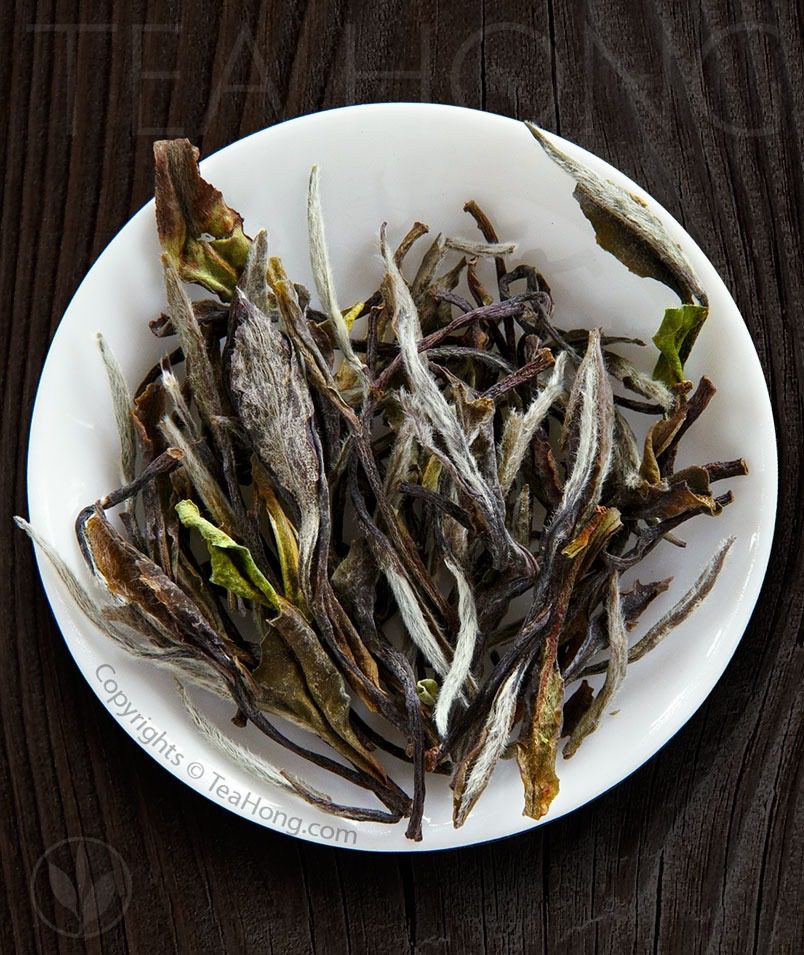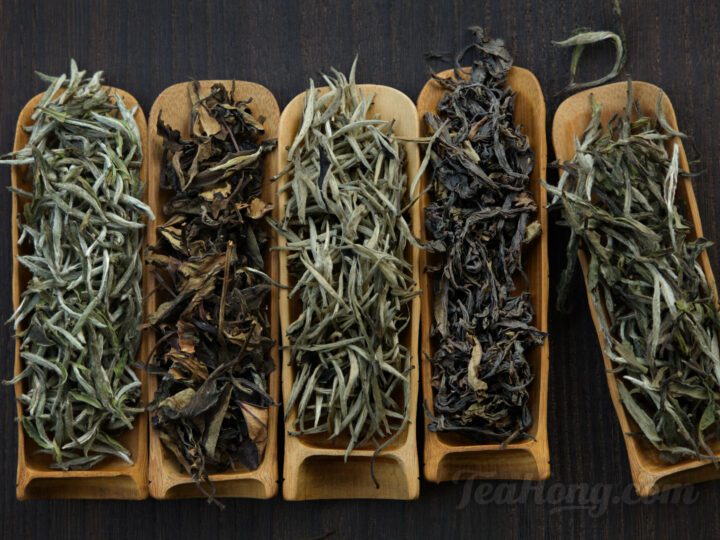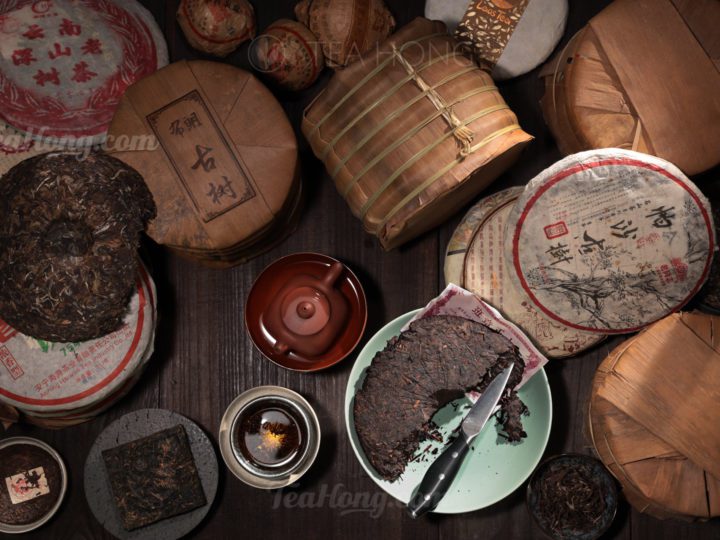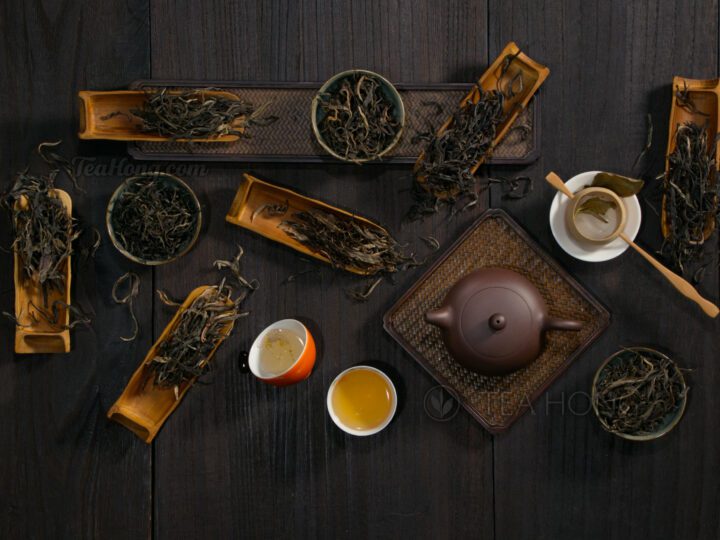

The particular taste of this category of tea comes from the resultant biochemistry of the slow but lengthy oxidation that happens during this withering. It is also this same composition that gives the unique salutary contents this category has been famous for.
The Da Bai groups of cultivars, developed in the late 1880’s in the origin of white tea — eastern Fujian — are also one contributing factor to the category’s renowned taste and appearance: furry white and relatively larger leaf shoots that yield a soft, sweet taste.
However, to the novice tea drinker the tea’s appearance maybe disappointing — the long withering process darkens and dull the originally white furry leaf buds. The tea is actually greyish rather than white. (Certain varieties, such as Sau Mei, is even dark brown. )


A tea master scraping the surface of a pile of fresh tealeaves in the withering bed. What sounds like a stationary processing step actually involves not only intervals of turning, aerating and re-piling, but also decisions in thickness of the pile, and length of each such intervals. The pluck quality as as a result of the cultivar, the year’s weather, the humidity and temperature of the processing hall, as well as the conditions in the previous step affect the decisions to such variables.
To the inexperienced tea producer, the lengthy withering process may sound simple, but is difficult to manage — exactly how long to wither, the thickness of the pile of leaves, the intervals when the leaves have to be turned in order to avoid rotting, and the manner of turning to ensure evenness while protecting the leaf’s integrity — are all factors that would result in either a batch of premium quality or a pile for the compost.
In the 1990’s waves of inexperienced people entered the tea industry in China under the “encouragement” of the government to ease the huge unemployment rate when a substantial percentage of companies and institutions that used to be government operated went private or closed down.
Many of the new tea farmers shortened the withering time to produce whiter looking products that would appeal more to novice drinkers, and more importantly, to take the easy way out because they know they would spoil the leaves without the needed mastery of the process.
The tea thus produced was nice looking but not white tea at all, albeit the white appearance. It tasted like pale green tea and turned bad a lot quicker than any real green tea when stored in the ambience. Then they begin propagating the idea of cold storing the white tea and infusing at lower temperature like that in green tea. There still are some people in the market that still believe this today, and such teas still exist, albeit in much lesser extent than 20 years ago now that people have learned.
To old drinkers like me, a true white tea is better when it has undergone ample oxidation/fermentation and aged well enough. It should be infused using boiling hot water for its optimum taste, as I have been advocating for 20 years.
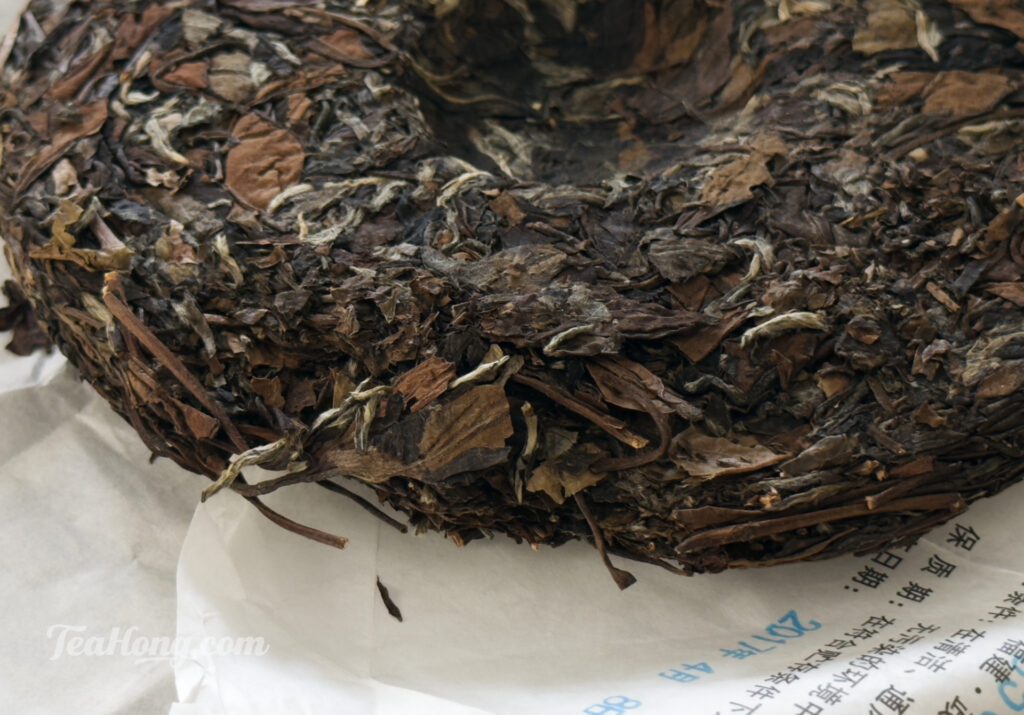

A 2017 White Peony cha bing. We have tasted quite a range of compressed white tea products and concluded that they fail to deliver any additional merits to the category. Most are actually quite miserable, regardless of the price, origin and wrapping.
In the past 10 years or so, people have begun turning white tea into compressed discuses ( so-called tea cakes ) and selling them at a higher price when the “cake” is older. They have seen the way pu’er tea becomes more expensive when turned into “cakes”. The trend, albeit controversial and not quite working in China, is gradually gaining some notice in the rest of the world.
However, the biochemistry of those white teas from Fujian, those made from the Da Bai groups of cultivars from the province are very different from those teas from Yunnan. They lack the higher ratio of catechins, amino acids and minerals that give their cousins in the west side of the country their unique characters. An aged Fujian white tea discus would not taste any better than a loose leaf one, given the same maturity and same material. We have tested that. The compression process with extra steaming and baking does not add much to the tea. Some of us actually think it tastes worse, in blind tastings.
The reality is, the taste profile of a loose leaf white tea can improve with age, only when the base quality and storage condition are right. Some productions, be it loose leaf or compressed, simply do not work. That applied to any other tea categories.
However, I am happy that more producers are producing white tea in the old fashioned, and better, way again; and the idea of maturing true white teas is more appreciated outside of the old style tea drinkers’ world that I am part of.
More happily, some more inventive producers are using the harvests from different cultivars and the long withering that I like to see in good white tea to give stunning new experience, such as our Hong Yu Deep White that is from the beautifully unique Taiwan cultivar Hong Yu and our White Shiiba that is from the Japanese cultivar Shiiba but produced in Nepal. On the other hand, there are those who have continued to use the predecessor cultivar of Da Bai — the sexually propagated Fujian Cai Cha — to make the ancient form of White Peony, as in our Pre-modern Peony. All of these varieties do not look white at all but are indeed white teas, according to their processing, not the colour of the product.
So you see, a white tea may not be white, and a white looking tea may not be white tea at all.
Note: the drying process makes a huge difference in the taste and look of the tea. For example, in the making of a Fuding style Silver Needles, the tea is baked to dry, thereby shortening the withering quite instantly and thereby yields a whiter product. On the other hand, a Zhenghe style White Peony is sun-dried. This time-demanding step gives the leaves additional withering and other bio-chemical transformations that contribute to the tea’s relatively deeper taste and darker overall colour.
Comments (0)
Leave a reply
You must be logged in to post a comment.




